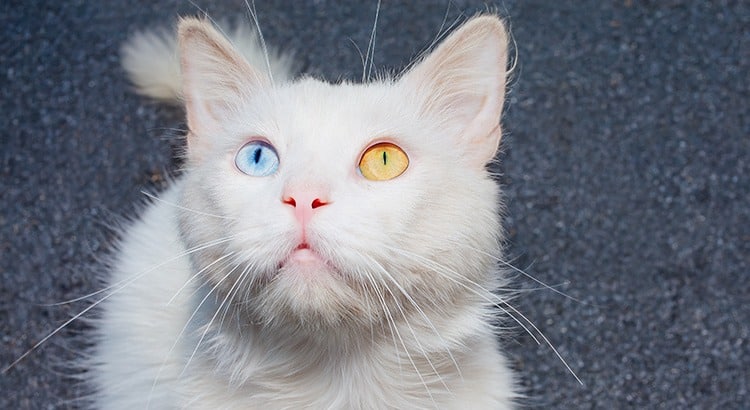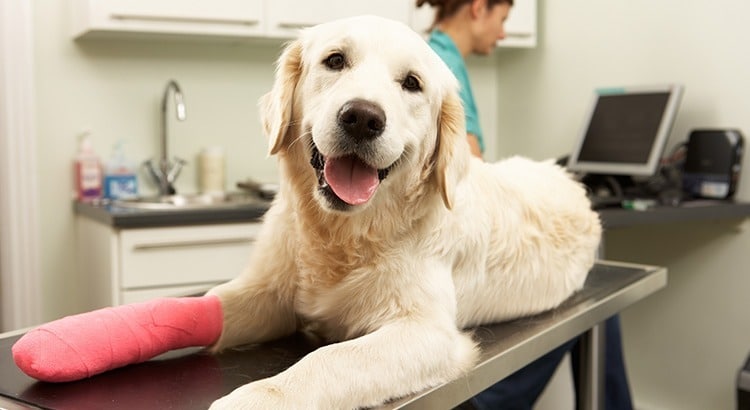
The American Pet Product Association (APPA) announced that the total U.S. pet industry expenditures reached $147 billion on 2023 and is forecasted to have continued annual growth through 2030. Of that total, $38.3 billion was spend on vet care and product sales. Despite wide-spread economic challenges, the industry remains resilient and is forecasted to top $250 billion by 2023.
The Surge in Pet Ownership
The APPA reports that the share of U.S. households owning pets has increased from 56% in 1988 to 66% in 2024, totaling nearly 87 million homes. The post-COVID rise in pet ownership has more than doubled from previous years (2009-2019) with research indicating that the pandemic will be long-lasting contributor to the growth of purchasing, adopting, and fostering a new pet.
Pet Insurance Industry Overview
The North American Pet Health Insurance Association (NAPHIA) released its 2024 State of the Industry (SOI) Report showing that the North American pet insurance sector grew another 21.9% in 2023, exceeding the $4 billion dollar mark with a record-setting $4.27 billion dollars in total premiums. That accounts for over 6.25 million pets in the U.S. who are insured.
Report Highlights
• $3.91 Billion – total premium volume
• 5,676,776 million- total number of pets insured
• $2.48 billion- total amount of claims pain in 2023
• 78.6% of insured pets were dogs vs 21.4% cats
• Average accident and illness premium for a dog was $675.61/year or $56.30/month
• Average accident and illness premium for a cat was $383.30/year or $31.94/month
Industry Growth and Potential
MarketWatch reports the APPA’s survey looked at pet ownership by generation and found that more millennials own pets than any other generation, at 32%. As vet expenses increase, in addition to economic inflation, pet insurance is a wise investment to protect pets and avoid high emergency and even routine care vet bills. With the increase in pet ownership from the pandemic and on, only a small percentage of pets are insured, pointing to an expected annual growth rate of 20% through 2025. This growth presents opportunities for brokers to expand their offerings.
Historical Context and Market Insights
The first commercial pet insurance policy in the United States was issued in 1982 for dog celebrity Lassie, by Veterinary Pet Insurance (VPI), founded by a veterinarian from Orange County, CA. According to Vertafore, only 15% of employers today offer a pet insurance benefit, with this number increasing rapidly. Per a 2021 Pet Insurance Survey, 67% were either beginning to search or actively searching for employment that offered pet benefits. Additionally, 51% of the survey respondents ranked pet insurance as the top benefit that would impact their decision to take a new job.
How Pet Insurance Works
Pet insurance typically covers treatments for common health issues. Policies allow pet owners to visit any veterinary practice, with reimbursement based on the chosen coverage. Virtual care options and wellness plans are also available, focusing on prevention and routine exam.
Cost Variations and Breed-Specific Insights
The cost of pet insurance varies widely depending on the breed and age of the pet. Much like health insurance, a range of aspects determines the price you’ll pay when seeking coverage for your hound or cat. According to the Insurance Information Institute, these factors can include the age of the dog, its health profile and the level of coverage being sought. Older dogs generally are more expensive to cover.
Pet Insurance as an Employee Benefit
The growing popularity of pets is influencing the employee benefits landscape. Work Life News reports that 51% of employees rank pet insurance among the top benefits that would impact their decision to take a new job. Nearly one in five employers offered pet insurance in 2023, up from the previous year. Surveys show that pet insurance benefits improve employee engagement, attraction, and retention.
Expanding Market and Future Trends
Pet insurance is seen as an essential employee benefit, with demand exceeding availability. For brokers, incorporating pet insurance into employee benefits packages can be challenging but rewarding. The industry is expected to attract more large insurance companies, driven by the increasing demand and potential for market growth.
Conclusion
The pet insurance industry in the U.S. is poised for substantial growth, driven by increasing pet ownership and the rising recognition of pet insurance as a valuable employee benefit. As the market evolves, it presents significant opportunities for insurers, brokers, and employers to enhance their offerings and support the well-being of both pets and their owners.
Pin Paws Pet Care is available to groups of any size with no minimum participation requirements. With no age or breed restrictions and policies underwritten by MetLife, our pet insurance plans contain value-added benefits to help with out-of-pocket costs associated with caring for pets.
Contact our team today to learn more and become a Pin Paws Pet Care Affiliate.
info@pinpaws.com
Table of content
Related articles

The American Pet Product Association (APPA) announced that the total U.S. pet industry expenditures reached $147 billion on 2023 and is forecasted to have continued annual growth through 2030. Of that total, $38.3 billion was spend on vet care and product sales. Despite wide-spread economic challenges, the industry remains resilient and is forecasted to top $250 billion by 2023.
The Surge in Pet Ownership
The APPA reports that the share of U.S. households owning pets has increased from 56% in 1988 to 66% in 2024, totaling nearly 87 million homes. The post-COVID rise in pet ownership has more than doubled from previous years (2009-2019) with research indicating that the pandemic will be long-lasting contributor to the growth of purchasing, adopting, and fostering a new pet.
Pet Insurance Industry Overview
The North American Pet Health Insurance Association (NAPHIA) released its 2024 State of the Industry (SOI) Report showing that the North American pet insurance sector grew another 21.9% in 2023, exceeding the $4 billion dollar mark with a record-setting $4.27 billion dollars in total premiums. That accounts for over 6.25 million pets in the U.S. who are insured.
Report Highlights
• $3.91 Billion – total premium volume
• 5,676,776 million- total number of pets insured
• $2.48 billion- total amount of claims pain in 2023
• 78.6% of insured pets were dogs vs 21.4% cats
• Average accident and illness premium for a dog was $675.61/year or $56.30/month
• Average accident and illness premium for a cat was $383.30/year or $31.94/month
Industry Growth and Potential
MarketWatch reports the APPA’s survey looked at pet ownership by generation and found that more millennials own pets than any other generation, at 32%. As vet expenses increase, in addition to economic inflation, pet insurance is a wise investment to protect pets and avoid high emergency and even routine care vet bills. With the increase in pet ownership from the pandemic and on, only a small percentage of pets are insured, pointing to an expected annual growth rate of 20% through 2025. This growth presents opportunities for brokers to expand their offerings.
Historical Context and Market Insights
The first commercial pet insurance policy in the United States was issued in 1982 for dog celebrity Lassie, by Veterinary Pet Insurance (VPI), founded by a veterinarian from Orange County, CA. According to Vertafore, only 15% of employers today offer a pet insurance benefit, with this number increasing rapidly. Per a 2021 Pet Insurance Survey, 67% were either beginning to search or actively searching for employment that offered pet benefits. Additionally, 51% of the survey respondents ranked pet insurance as the top benefit that would impact their decision to take a new job.
How Pet Insurance Works
Pet insurance typically covers treatments for common health issues. Policies allow pet owners to visit any veterinary practice, with reimbursement based on the chosen coverage. Virtual care options and wellness plans are also available, focusing on prevention and routine exam.
Cost Variations and Breed-Specific Insights
The cost of pet insurance varies widely depending on the breed and age of the pet. Much like health insurance, a range of aspects determines the price you’ll pay when seeking coverage for your hound or cat. According to the Insurance Information Institute, these factors can include the age of the dog, its health profile and the level of coverage being sought. Older dogs generally are more expensive to cover.
Pet Insurance as an Employee Benefit
The growing popularity of pets is influencing the employee benefits landscape. Work Life News reports that 51% of employees rank pet insurance among the top benefits that would impact their decision to take a new job. Nearly one in five employers offered pet insurance in 2023, up from the previous year. Surveys show that pet insurance benefits improve employee engagement, attraction, and retention.
Expanding Market and Future Trends
Pet insurance is seen as an essential employee benefit, with demand exceeding availability. For brokers, incorporating pet insurance into employee benefits packages can be challenging but rewarding. The industry is expected to attract more large insurance companies, driven by the increasing demand and potential for market growth.
Conclusion
The pet insurance industry in the U.S. is poised for substantial growth, driven by increasing pet ownership and the rising recognition of pet insurance as a valuable employee benefit. As the market evolves, it presents significant opportunities for insurers, brokers, and employers to enhance their offerings and support the well-being of both pets and their owners.
Pin Paws Pet Care is available to groups of any size with no minimum participation requirements. With no age or breed restrictions and policies underwritten by MetLife, our pet insurance plans contain value-added benefits to help with out-of-pocket costs associated with caring for pets.
Contact our team today to learn more and become a Pin Paws Pet Care Affiliate.
info@pinpaws.com

The American Pet Product Association (APPA) announced that the total U.S. pet industry expenditures reached $147 billion on 2023 and is forecasted to have continued annual growth through 2030. Of that total, $38.3 billion was spend on vet care and product sales. Despite wide-spread economic challenges, the industry remains resilient and is forecasted to top $250 billion by 2023.
The Surge in Pet Ownership
The APPA reports that the share of U.S. households owning pets has increased from 56% in 1988 to 66% in 2024, totaling nearly 87 million homes. The post-COVID rise in pet ownership has more than doubled from previous years (2009-2019) with research indicating that the pandemic will be long-lasting contributor to the growth of purchasing, adopting, and fostering a new pet.
Pet Insurance Industry Overview
The North American Pet Health Insurance Association (NAPHIA) released its 2024 State of the Industry (SOI) Report showing that the North American pet insurance sector grew another 21.9% in 2023, exceeding the $4 billion dollar mark with a record-setting $4.27 billion dollars in total premiums. That accounts for over 6.25 million pets in the U.S. who are insured.
Report Highlights
• $3.91 Billion – total premium volume
• 5,676,776 million- total number of pets insured
• $2.48 billion- total amount of claims pain in 2023
• 78.6% of insured pets were dogs vs 21.4% cats
• Average accident and illness premium for a dog was $675.61/year or $56.30/month
• Average accident and illness premium for a cat was $383.30/year or $31.94/month
Industry Growth and Potential
MarketWatch reports the APPA’s survey looked at pet ownership by generation and found that more millennials own pets than any other generation, at 32%. As vet expenses increase, in addition to economic inflation, pet insurance is a wise investment to protect pets and avoid high emergency and even routine care vet bills. With the increase in pet ownership from the pandemic and on, only a small percentage of pets are insured, pointing to an expected annual growth rate of 20% through 2025. This growth presents opportunities for brokers to expand their offerings.
Historical Context and Market Insights
The first commercial pet insurance policy in the United States was issued in 1982 for dog celebrity Lassie, by Veterinary Pet Insurance (VPI), founded by a veterinarian from Orange County, CA. According to Vertafore, only 15% of employers today offer a pet insurance benefit, with this number increasing rapidly. Per a 2021 Pet Insurance Survey, 67% were either beginning to search or actively searching for employment that offered pet benefits. Additionally, 51% of the survey respondents ranked pet insurance as the top benefit that would impact their decision to take a new job.
How Pet Insurance Works
Pet insurance typically covers treatments for common health issues. Policies allow pet owners to visit any veterinary practice, with reimbursement based on the chosen coverage. Virtual care options and wellness plans are also available, focusing on prevention and routine exam.
Cost Variations and Breed-Specific Insights
The cost of pet insurance varies widely depending on the breed and age of the pet. Much like health insurance, a range of aspects determines the price you’ll pay when seeking coverage for your hound or cat. According to the Insurance Information Institute, these factors can include the age of the dog, its health profile and the level of coverage being sought. Older dogs generally are more expensive to cover.
Pet Insurance as an Employee Benefit
The growing popularity of pets is influencing the employee benefits landscape. Work Life News reports that 51% of employees rank pet insurance among the top benefits that would impact their decision to take a new job. Nearly one in five employers offered pet insurance in 2023, up from the previous year. Surveys show that pet insurance benefits improve employee engagement, attraction, and retention.
Expanding Market and Future Trends
Pet insurance is seen as an essential employee benefit, with demand exceeding availability. For brokers, incorporating pet insurance into employee benefits packages can be challenging but rewarding. The industry is expected to attract more large insurance companies, driven by the increasing demand and potential for market growth.
Conclusion
The pet insurance industry in the U.S. is poised for substantial growth, driven by increasing pet ownership and the rising recognition of pet insurance as a valuable employee benefit. As the market evolves, it presents significant opportunities for insurers, brokers, and employers to enhance their offerings and support the well-being of both pets and their owners.
Pin Paws Pet Care is available to groups of any size with no minimum participation requirements. With no age or breed restrictions and policies underwritten by MetLife, our pet insurance plans contain value-added benefits to help with out-of-pocket costs associated with caring for pets.
Contact our team today to learn more and become a Pin Paws Pet Care Affiliate.
info@pinpaws.com



